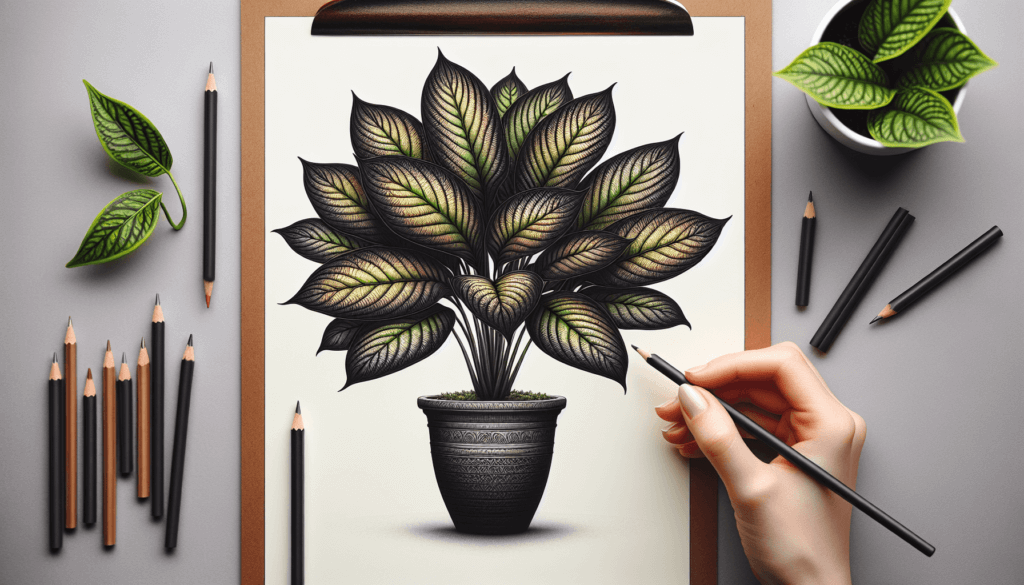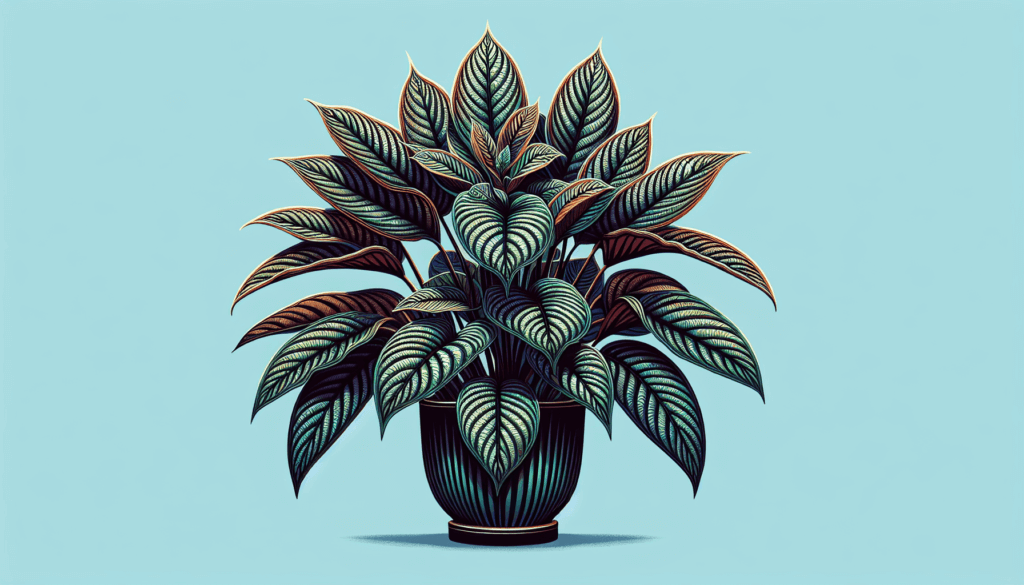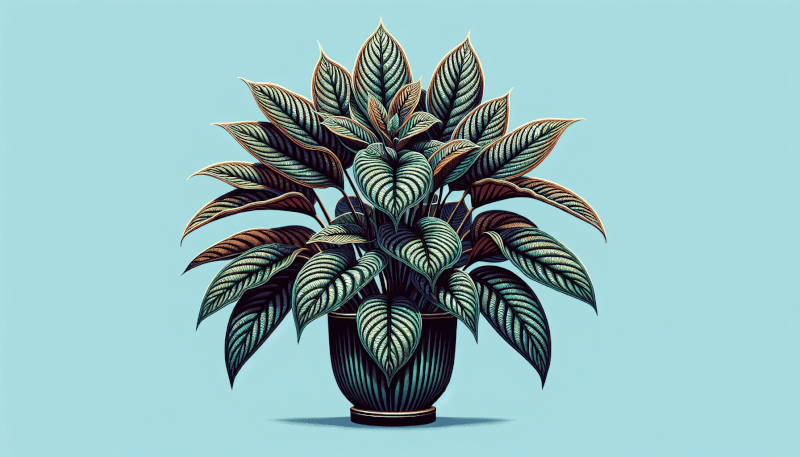Are you a proud plant parent of a beautiful Birkin plant? Well, fret no more, because this article is here to provide you with all the essential tips and tricks for successful birkin plant care. From watering techniques to proper lighting requirements, we’ve got you covered. Whether you’re a beginner or an experienced plant enthusiast, this article will ensure that your Birkin plant thrives and flourishes in your home. So, grab your gardening gloves and let’s dive into the wonderful world of Birkin plant care!
Light Requirements
Indoor Lighting
When it comes to the light requirements of your Birkin plant, providing adequate indoor lighting is crucial. Birkin plants thrive in bright, indirect light. Ideally, you should place your Birkin plant near a window that provides filtered sunlight. Direct sunlight can be too harsh for the delicate leaves of the Birkin plant and may result in leaf burn or damage. If you don’t have access to ample natural light, you can also consider using artificial grow lights, preferably full-spectrum lights, to provide the necessary light for your Birkin plant’s growth.
Outdoor Lighting
If you decide to keep your Birkin plant outdoors, it is essential to find the ideal lighting conditions. Birkin plants enjoy bright, indirect sunlight, so placing them in an area where they receive partial shade or filtered light is ideal. Too much direct sunlight can lead to leaf burn and scorching, so it’s best to provide some shade during the hottest parts of the day. Additionally, if you live in a region with intense sunlight, consider moving your Birkin plant to a shaded area to protect it from excessive heat and potential leaf damage.
Watering
Frequency
Watering your Birkin plant correctly is key to its health and vitality. It’s essential to strike a balance between keeping the soil moist enough for the plant’s needs without overwatering. As a general rule of thumb, water your Birkin plant when the top inch of the soil feels dry to the touch. Overwatering can lead to root rot, which can be detrimental to the plant’s overall health. It’s better to underwater slightly than to overwater, so be mindful not to let the soil become waterlogged.
Watering Techniques
When watering your Birkin plant, aim to provide a thorough watering, ensuring that water reaches the root system. Avoid simply moistening the top layer of soil as this may leave the plant’s roots dry and deprived of moisture. Consider using a watering can with a narrow spout to provide a more targeted and controlled flow of water. Additionally, it’s advisable to use room temperature water as cold water can shock the roots of your Birkin plant.
Water Quality
The quality of water you use to hydrate your Birkin plant matters. Tap water, depending on your location, may contain chlorine or other chemicals that can be harmful to the plant over time. To avoid any potential issues, allow tap water to sit for at least 24 hours before using it to water your Birkin plant. This time allows chlorine to evaporate, reducing its potential negative effects. Alternatively, you can use filtered or distilled water to ensure that your Birkin plant receives pure and clean hydration.

Temperature and Humidity
Temperature Range
Maintaining the ideal temperature range is vital for the well-being of your Birkin plant. Birkins thrive in temperatures between 65°F (18°C) to 85°F (29°C). Avoid exposing your Birkin plant to temperatures below 50°F (10°C) or above 90°F (32°C) for extended periods. Sudden temperature drops or drafts from air conditioning or heating vents can cause stress to the plant. Ensure that your Birkin is placed in an area where it can enjoy a stable temperature free from extreme fluctuations.
Humidity Requirements
Birkin plants are native to tropical regions and, as such, thrive in high humidity environments. It’s essential to provide a humid atmosphere for your Birkin plant to flourish. One way to increase humidity is by placing a tray filled with water and pebbles near the plant. As the water evaporates, it will create a humid microclimate around the Birkin plant. Alternatively, you can use a humidifier to maintain the optimal humidity level. Misting the leaves of your Birkin plant with room temperature water can also help increase humidity and prevent dryness.
Potting and Soil
Pot Selection
Choosing the right pot for your Birkin plant is crucial for its growth and development. Opt for a pot with drainage holes to allow excess water to escape, preventing waterlogging and root rot. Additionally, ensure that the pot is of suitable size, providing enough room for the plant’s root system to grow. A pot that is too large can lead to moisture retention in the soil, potentially causing issues such as root suffocation or fungal growth. Select a pot that is proportionate to the size of your Birkin plant, allowing for healthy growth and stability.
Soil Type
The type of soil you use for your Birkin plant plays a significant role in its overall health. A well-draining soil mix is essential to prevent water from pooling around the roots, leading to root rot. A recommended soil mix for Birkin plants consists of a combination of peat moss, perlite, and a small amount of organic matter such as compost. These components provide good drainage, aeration, and retain moisture, creating an optimal environment for your Birkin plant’s roots to thrive.
Potting Process
When potting your Birkin plant, start by partially filling the pot with the chosen soil mix. Gently remove the plant from its current container, being careful not to damage the roots. Place the plant in the new pot, ensuring that the top of the root ball is level with the pot’s rim. Fill the remaining space with the soil mix, lightly firming it around the root system. Avoid over-packing the soil, as this can restrict root growth and lead to poor drainage. Once potted, give your Birkin plant a thorough watering to settle the soil and promote root establishment.

Fertilizing
Types of Fertilizers
Fertilizing your Birkin plant helps provide essential nutrients necessary for its growth and overall well-being. When selecting a fertilizer, opt for a balanced, water-soluble houseplant fertilizer. Look for a fertilizer with an NPK (nitrogen, phosphorus, potassium) ratio of 20-20-20 or a similar balanced blend. Avoid using fertilizers that are high in nitrogen, as this can lead to excessive foliage growth at the expense of root development. Organic fertilizers, such as compost tea or worm castings, can also be beneficial for promoting healthy growth in your Birkin plant.
Fertilizing Schedule
Establishing a fertilizing schedule is essential to ensure your Birkin plant receives the necessary nutrients consistently. During the growing season, which typically spans from spring to fall, fertilize your Birkin plant every four to six weeks. Dilute the recommended amount of fertilizer in water according to the instructions provided by the manufacturer. Avoid overfertilizing, as this can lead to nutrient burn and other issues. During the winter months, when the plant is in a dormant phase, reduce or suspend fertilization to align with its natural growth cycle.
Application Methods
When applying fertilizer to your Birkin plant, follow the instructions provided by the manufacturer. In most cases, it is recommended to dilute the fertilizer in water before application. Apply the diluted fertilizer to the soil, avoiding direct contact with the leaves or stems of the plant. Always water your Birkin plant thoroughly after fertilizing to ensure proper nutrient absorption. It’s important to remember that proper fertilization is just one aspect of caring for your Birkin plant, and providing the right amount of light, water, and other factors contribute to its overall health.
Pruning and Propagation
Pruning Techniques
Regular pruning is beneficial for maintaining the shape and health of your Birkin plant. Pruning also helps remove any damaged or diseased leaves, allowing the plant to focus its energy on new growth. When pruning your Birkin plant, use clean, sharp pruning shears or scissors to avoid causing unnecessary trauma to the plant. Start by removing any yellowing or dead leaves at the base of the stem. If the plant becomes too leggy, consider pruning back the stem to encourage branching and a more compact growth habit. Overall, aim to maintain a balanced and aesthetically pleasing shape for your Birkin plant.
Propagation Methods
If you wish to expand your collection of Birkin plants or share the joy of plant propagation with others, you can propagate your Birkin plant through various methods. One common method is by stem or tip cuttings. Select a healthy stem with several leaves and make a clean cut just below a node. Remove any lower leaves, and place the cutting in a glass of water or directly into a moistened potting mix. Keep the cutting in a warm, humid environment and monitor its progress. With patience, you will start to see roots forming, indicating successful propagation. Another method is by division, where you separate a mature plant into two or more sections, each with its own roots and foliage.
Pests and Diseases
Common Pests
Despite their hardiness, Birkin plants are susceptible to certain pests. Common pests that may infest your Birkin plant include spider mites, mealybugs, and aphids. Spider mites are tiny pests that can cause webbing and yellowing leaves. Mealybugs, on the other hand, appear as white, cotton-like clusters and can sap the plant’s energy. Aphids are small, soft-bodied insects that feed on the plant’s sap and can cause leaf distortion. Regularly inspect your Birkin plant for signs of pest infestation, especially on the underside of leaves, and take prompt action to prevent the pests from spreading.
Prevention and Control
To prevent pest infestations, it’s crucial to practice good plant hygiene. Inspect new plants before bringing them indoors and isolate them for a few days to ensure they are pest-free. Regularly dust the leaves of your Birkin plant, as dust can attract pests. If you notice signs of pest infestation, start by manually removing the pests by wiping the leaves with a damp cloth or cotton swab dipped in rubbing alcohol. For severe infestations, consider using natural insecticidal soaps or horticultural oils, following the instructions carefully to avoid harming your plant.
Common Diseases
While Birkin plants are generally hardy, they can be susceptible to certain diseases under unfavorable conditions. Overwatering, poor drainage, or using infected soil can lead to root rot and fungal diseases. Leaf spots, characterized by dark or discolored spots on the leaves, can also be caused by excess moisture or pathogens. To prevent diseases, ensure your Birkin plant is potted in well-draining soil and avoid overwatering. If you notice signs of disease, promptly remove affected leaves or trim affected areas to prevent further spread. Adjusting watering and providing proper ventilation can also help mitigate disease-related issues.
Cleaning and Dusting
Removing Dust
Regularly removing dust from your Birkin plant’s leaves is essential for its health and appearance. Dust can block the plant’s ability to properly photosynthesize and absorb light. To clean the leaves, use a soft, damp cloth or sponge and gently wipe each leaf, removing any accumulated dust. Avoid using harsh chemicals or leaf shine products, as they can clog the plant’s pores and impede its ability to breathe. By regularly dusting your Birkin plant, you not only improve its aesthetic appeal but also promote its overall well-being.
Cleaning Leaves
In addition to dusting, occasionally cleaning your Birkin plant’s leaves can help keep them free from debris and enhance their natural beauty. To clean the leaves, fill a basin or sink with room temperature water and add a mild liquid dish soap. Gently swish the leaves in the water to remove any dirt or residue, taking care not to damage or tear the delicate foliage. Rinse the leaves thoroughly with clean water and allow them to air dry or pat them dry with a soft cloth. Be cautious while handling the leaves to prevent any unnecessary stress or damage to your beloved Birkin plant.
Troubleshooting
Yellowing Leaves
Yellowing leaves on your Birkin plant can indicate various issues that require attention. Overwatering is a common cause of yellowing leaves, as it can lead to root rot. Ensure that you’re allowing the top inch of soil to dry out before watering again. Another possible cause for yellowing leaves is inadequate light. If your Birkin plant is not receiving enough bright, indirect light, it may start to exhibit yellowing or browning of leaves. Adjust the placement of your plant to provide more suitable lighting conditions. Lastly, nutrient deficiencies or excesses can also lead to yellowing leaves. Ensure you are following a proper fertilizing schedule and using balanced fertilizers to provide your plant with necessary nutrients.
Wilting
If your Birkin plant is wilting, it may be an indication that it is not receiving enough water. Check the soil moisture by inserting your finger into the top inch of soil. If it feels dry, it’s time to water your plant. Ensure that you’re providing a thorough watering, allowing the water to reach the root system. Wilting can also occur due to temperature stress, especially if your Birkin plant is exposed to extreme temperatures or drafts. Adjust the placement of your plant to a more stable environment, away from direct air conditioning or heating vents. If your plant continues to wilt despite proper watering and temperature adjustments, it may be a sign of an underlying issue, and further investigation may be necessary.
Leaf Spotting
Leaf spotting on your Birkin plant can be caused by various factors, including fungal or bacterial infections, water droplets on the leaves, or physical damage. If you notice dark or discolored spots on the leaves, inspect your plant for signs of disease or pests. Remove any affected leaves promptly to prevent further spread. Avoid getting water on the leaves when watering your plant, as water droplets can magnify sunlight and cause damage to the plant tissue. Lastly, be careful while handling your Birkin plant to avoid causing physical damage, such as tearing or bruising of the leaves.
Growth and Maintenance
Encouraging Growth
To encourage healthy growth in your Birkin plant, it’s crucial to meet its light, water, temperature, and humidity requirements. Providing bright, indirect light, watering appropriately, maintaining a stable temperature range, and providing sufficient humidity will create an optimal environment for growth. Additionally, regular fertilization and proper pruning will promote vigorous growth and a well-balanced shape. Observing your plant’s growth patterns and adjusting care accordingly will help ensure that your Birkin plant thrives and flourishes.
Regular Maintenance
Regular maintenance is necessary to keep your Birkin plant looking its best. Alongside regular watering and proper light exposure, monitoring your plant for pests, diseases, and any signs of stress is essential. Keep an eye out for yellowing leaves, wilting, or any abnormal leaf markings, and take appropriate action if necessary. Additionally, dusting and occasionally cleaning the leaves will help maintain their health and beauty. By consistently providing the care and attention your Birkin plant needs, you will create a thriving and visually stunning addition to your indoor or outdoor space.
In conclusion, caring for your Birkin plant involves providing appropriate light, water, temperature, and humidity conditions. Selecting the right potting materials, fertilizing, pruning, and effectively dealing with pests and diseases are also essential aspects of maintaining your Birkin plant’s health. By following these comprehensive care guidelines and regularly tending to your Birkin plant, you’ll be rewarded with a beautiful and thriving plant that will bring joy and beauty to your home or garden.


